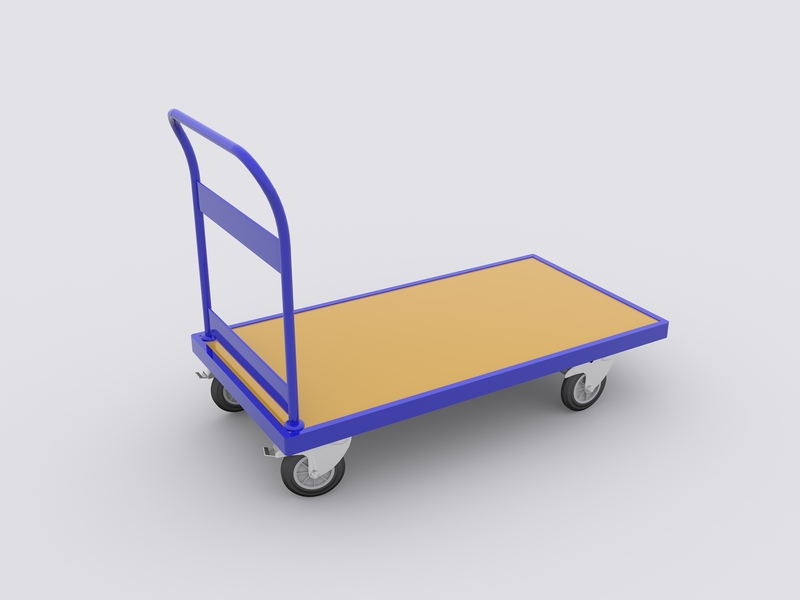Proven Methods for Protecting Your Possessions While Moving
Moving to a new home or office is both exciting and challenging. Protecting your possessions during the move is one of the most critical aspects of a successful relocation. Whether you're moving locally, across the country, or internationally, ensuring the safety of your valuables is paramount. This comprehensive guide will explore proven methods for protecting your possessions while moving. You'll find insightful tips, expert advice, and the latest techniques to safeguard everything you own -- from fragile heirlooms to everyday items.
Why It's Important to Protect Your Belongings During a Move
Moving exposes your possessions to risks such as accidental damage, theft, loss, or environmental harm. Using effective packing and moving strategies not only preserves your valuables but also brings peace of mind throughout the relocation process. Below, we'll uncover the best ways to shield your items and ensure a smooth transition.

Essential Pre-Move Planning Steps
1. Create a Detailed Inventory List
- Document Everything: Catalog every item you plan to move. Use a spreadsheet or a dedicated inventory app for better organization.
- Photograph Valuables: Take photos and videos of high-value and fragile possessions. This not only helps with insurance claims but also records the pre-move condition of your belongings.
- Label Boxes Clearly: Mark boxes with contents and room destination to minimize handling and reduce the risk of loss.
2. Assess Your Insurance Needs
Before packing, evaluate your insurance options:
- Homeowners/Renters Insurance: Check if your policy covers items in transit.
- Supplemental Moving Insurance: Consider purchasing additional coverage, especially for high-value items, artwork, or antiques.
3. Choose the Right Moving Company
- Research Thoroughly: Look for licensed and insured movers with strong reviews and references.
- Understand the Services: Some companies offer specialty packing, custom crating, or climate-controlled transportation for delicate possessions.
- Request an On-Site Estimate: This ensures accurate pricing and lets you discuss any specific concerns about protecting your possessions during the move.
Proven Packing Techniques for a Secure Move
1. Invest in High-Quality Packing Supplies
Using the right packing materials can make a significant difference. To protect your possessions during moving, gather:
- Sturdy corrugated boxes in various sizes
- Heavy-duty packing tape
- Bubble wrap and foam sheets
- Packing paper and newsprint
- Furniture blankets and stretch wrap
- Specialty containers for electronics, mirrors, or artwork
2. Master the Art of Packing
- Pack Strategically: Place heavier items on the bottom and lighter ones on top to prevent crushing.
- Wrap Each Item Individually: Use bubble wrap, foam, or packing paper to cushion every piece, especially fragile possessions.
- Fill Empty Spaces: Use crumpled paper or clothing to fill gaps in boxes, stopping items from shifting in transit.
- Seal Boxes Securely: Double-tape the bottoms and tops for enhanced strength.
- Label Fragile Items: Use bright "FRAGILE" stickers and note the upright position with arrows when appropriate.
3. Special Handling for Fragile and Valuable Items
- Glassware and Dishes: Wrap each item snugly in packing paper; use cell boxes for extra protection.
- Electronics: Use original packaging where possible; otherwise, utilize anti-static bubble wrap and foam inserts.
- Artwork and Mirrors: Place corner protectors and wrap in glassine paper or bubble wrap, then pack in custom crates.
- Jewelry and Important Documents: Always move these yourself in a secure container or safe.
- Furniture: Disassemble where possible and use furniture blankets to prevent scratches.
Day-of-Move Security and Safety Tips
The day you move can be hectic. Protecting your belongings while moving requires vigilance and planning.
1. Supervise the Loading Process
- Be Present: Oversee movers as they load your belongings, clarifying any special care instructions.
- Check Inventory: Verify each item as it leaves your old residence, and maintain a checklist for unloading.
2. Secure High-Value Items Personally
- Hand-carry valuables, cash, sensitive documents, medications, and irreplaceable mementos.
- Use a personal vehicle or a lockbox for enhanced protection during transit.
3. Prevent Theft and Loss
- Never leave moving trucks unattended or unlocked.
- Avoid sharing your moving date or inventory details on social media.
- Keep doors closed and monitor entryways during the moving process.
After the Move: Ensuring Your Possessions Are Safe
1. Inspect Everything Upon Arrival
- Use your inventory list to ensure all items made it to your new home.
- Check each box and piece of furniture for damage before signing off with the movers.
- Document and photograph any damage for prompt claims with your moving insurance or the moving company.
2. Secure Your New Home Immediately
- Change locks and set up security systems before moving in your valuables.
- Unpack high-value and sensitive items first, storing them securely out of direct view.
3. Properly Dispose of Packing Materials
- Break down boxes, recycle materials, and avoid leaving boxes labeled with valuable contents outside your home.
- Keep your new space orderly to quickly notice missing or misplaced possessions.
Additional Tips for Protecting Your Possessions During Storage
1. Opt for Safe and Secure Storage Facilities
- Choose a facility with 24/7 surveillance, gated entry, and strong reputations for security.
- Select climate-controlled storage for antiques, electronics, or belongings sensitive to temperature and humidity.
2. Use Proper Packing for Storage
- Elevate boxes using pallets to avoid water damage from basement leaks or flooding.
- Cover furniture and mattresses with breathable fabric covers to prevent dust buildup.
Common Mistakes to Avoid for Optimal Item Security
- Procrastination: Rushing packing at the last minute increases the likelihood of damage or missed items.
- Ignoring Insurance: Assuming your possessions are covered in transit can be a costly mistake.
- Overloading Boxes: Exceeding box weight limits puts items at risk and increases strain on movers.
- Poor Labeling: Unmarked or mislabeled boxes are more likely to be misplaced or mishandled.
Special Considerations: Moving with Pets and Plants
Protecting Pets
- Transport pets in secure carriers with identification tags.
- Keep them with you during the move or arrange trusted care for longer relocations.
Relocating Plants
- Move plants in sturdy boxes with air holes; avoid leaving them in vehicles for extended periods.
- Replant or repot promptly following arrival at your new place.
Utilizing Professional Packing Services: Is It Worth the Cost?
Professional movers offer a higher level of security for your possessions, especially when dealing with fragile, bulky, or high-value items. Consider their services if you have:
- Limited time to pack
- No experience with moving delicate or heavy furniture
- Concerns about safely transporting artwork or valuables
Though it comes at a premium, professional packing often results in fewer claims and greater peace of mind.

Conclusion: Ensuring a Smooth, Secure Move
Protecting your possessions while moving doesn't have to be stressful. By following proven methods for protecting your items during a move--from careful planning and the use of quality materials to the selection of reliable movers--you can dramatically reduce risk and enjoy a seamless relocation experience.
Remember, every move is unique. Take time to assess your possessions, adapt these methods as needed, and don't hesitate to seek expert help for challenging items. Your memories, valuables, and essential belongings deserve the very best protection on your journey to a new space.
Frequently Asked Questions
- What is the best way to protect fragile items during a move?
*Wrap each item individually with bubble wrap or foam sheets, use sturdy boxes, and fill gaps with cushioning materials.* - Do I need special insurance for moving?
Yes, consider moving insurance for high-value possessions or if your existing policy doesn't cover items in transit. - Is it safe to move electronics in a moving truck?
Yes, if properly packed in anti-static and cushioned packing materials. Keep them upright and avoid stacking heavy items on top. - Should I move valuables myself?
Absolutely. Whenever possible, personally transport jewelry, documents, and irreplaceable items.
If you follow these proven tips and methods for protecting your possessions while moving, you'll minimize stress and make your moving day a safe and positive start to your next adventure.



